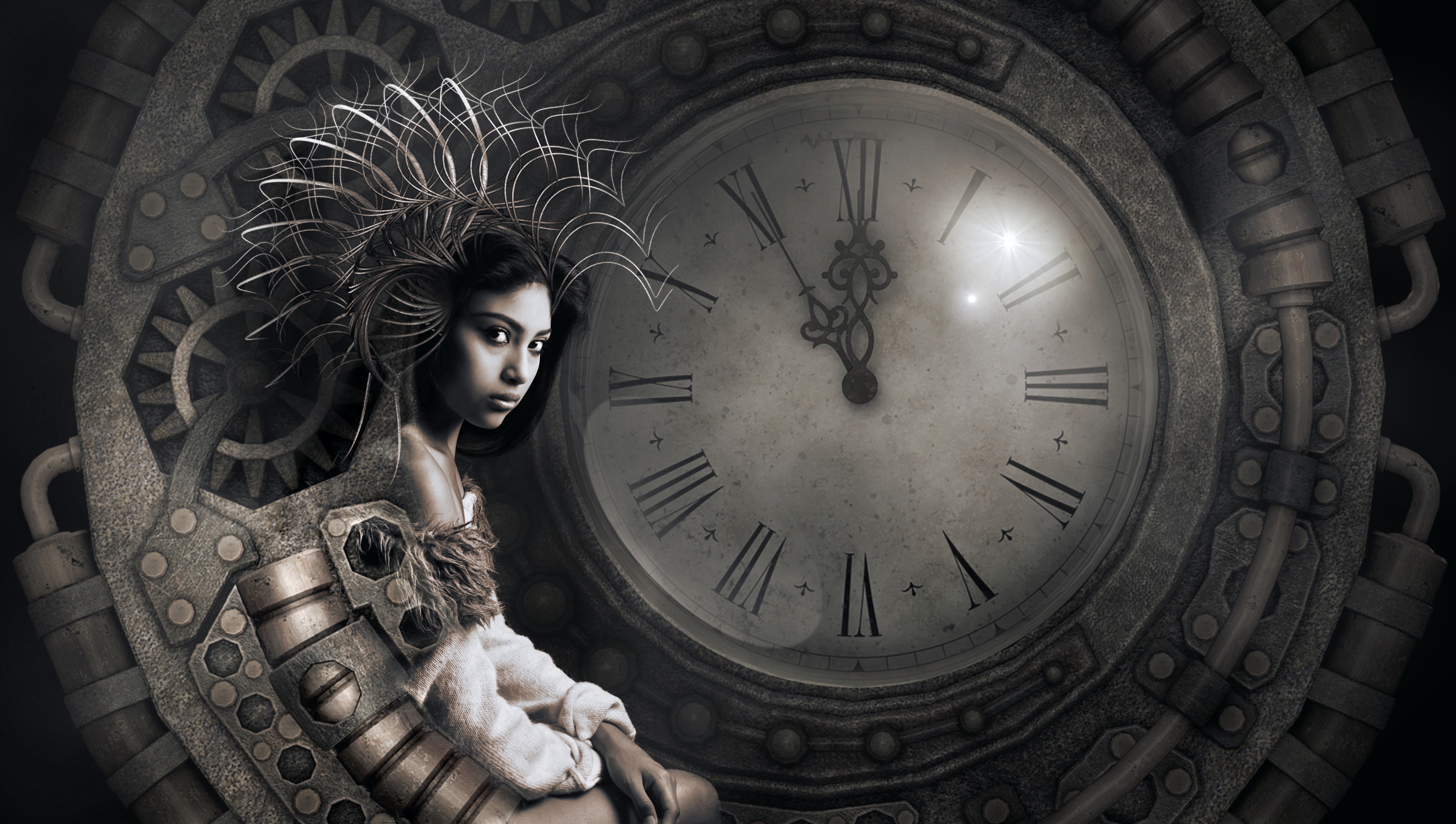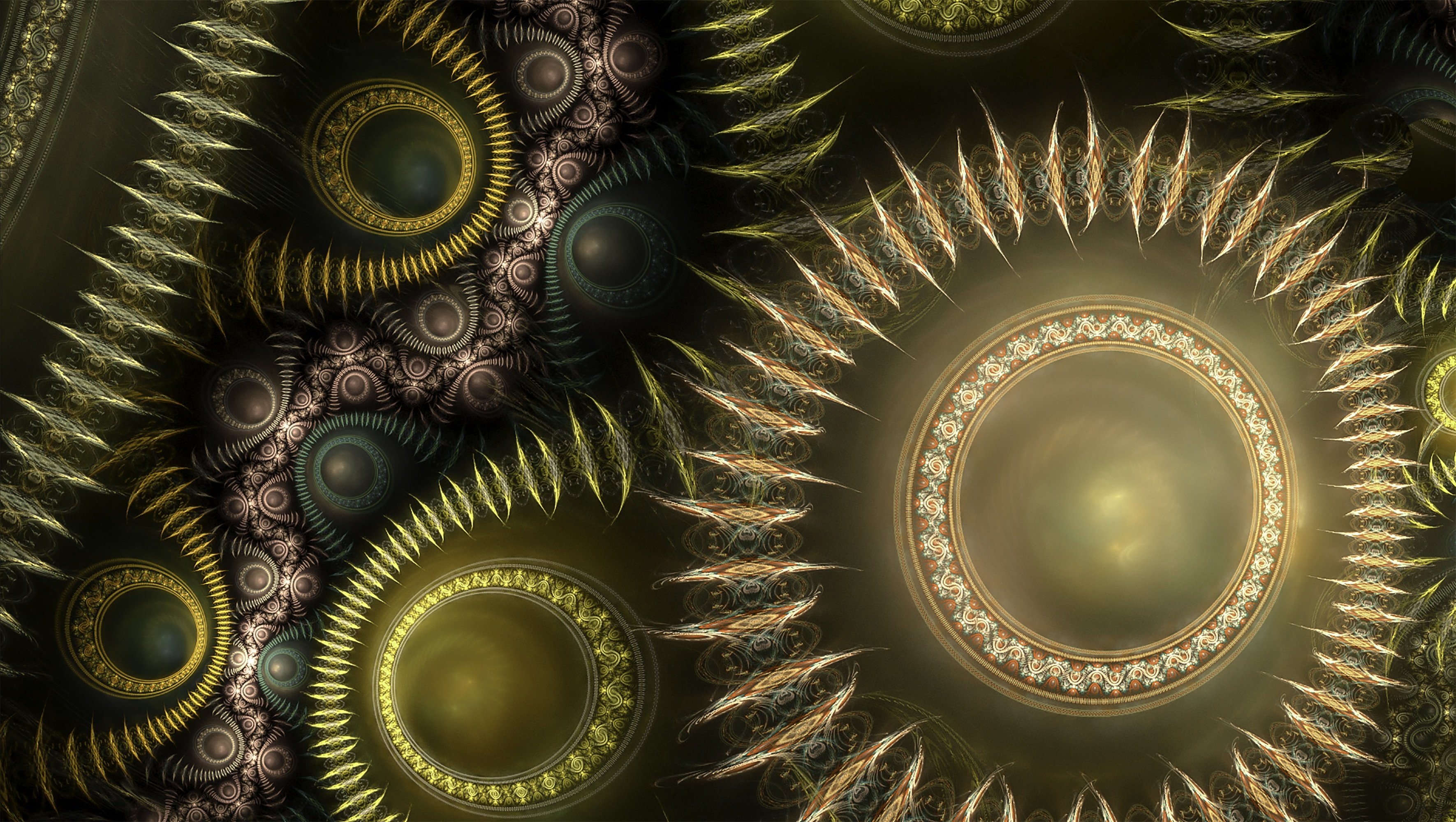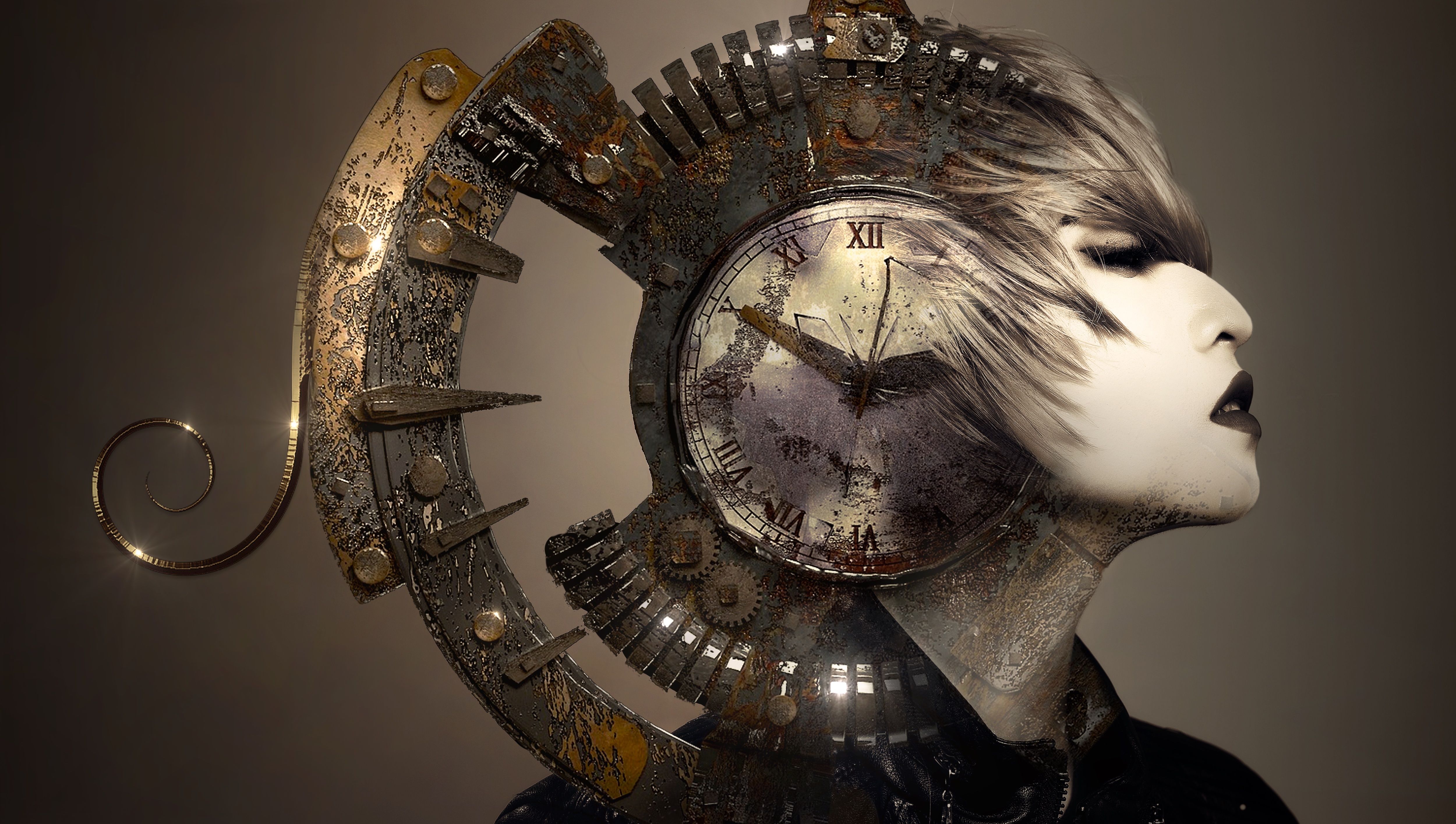As Descent Into Avernus begins, the city of Elturel has fallen, sending waves of desperate refugees down the Chionthar River to overwhelm the resources of beleaguered Baldur’s Gate. The true story of what happened is detailed in the adventure, but in such times of confusion and chaos it is likely that many stories — some based in a faulty understanding of the truth, others being entirely fabrication — will be flying around. You can use the following rumors to draw an air of mystery around the fall of Elturel as your campaign begins. In those early days, each time the PCs interact with someone they are likely to hear some new version or radical variation of the tale. Others will also be desperate to find out the truth and will likely quiz the PCs on what they know and what they’ve heard.
1. ELTUREL LIVES!
The Companion — Amaunator’s Gift, the shining orb which hangs as a second sun above the city of Elturel and has long protected it from the scourge of the undead — sensed that a great evil was threatening Elturel. It bathed the city in its holy rays and drew it across time and space to the Keep of the Eternal Sun, the stronghold of Amaunator, God of Sun and Time. Unfortunately, many who sought to reach the city before its ascension were unable to do so. In some versions of this rumor, when the danger has passed, the city will be returned. (Or, alternatively, this was a reward for the city’s holiness. All those within have been transformed into angels to continue their holy works upon a higher plane of existence.)
2. FIRE OF DRAGONS
A dozen ancient dragons flew out of the east and burned the city. Some report that there were riders on one of the dragons or all of the dragons (a woman in white, death knights, storm giants). The tales might say that all the dragons were of the same color (usually red or black, even though the latter would be incompatible with the dragons burning the city). Others report that the dragons were of many different colors, suggesting that Tiamat might be responsible. A few days later, the PCs might run into a morphed version of this story in which Tiamat herself was leading the dragons in their destruction of the city.
3. ARMY OF DEMONS
Thirteen planar gates opened at various points within Elturel and thirteen balors leading thirteen demon armies flooded through and laid waste to the city. When the last refugees fled, it’s said they looked back to see a citadel of obsidian being raised in the center of the city — a spire of black corruption reaching up towards the dimming light of the Companion.
4. METEOR!
It was a meteor strike! It fell from the sky and landed near the center of the city, wiping it out in a cataclysmic explosion that could be heard for miles around. (Or maybe the meteor flew straight through the Companion, causing it to explode! The meteor landed a few thousand feet or several miles away or changed direction and flew off to the west.)
5. ELTUREL BESIEGED!
Elturel has not actually fallen! It is merely besieged by a necromancer’s army of the undead / a horde of orcs / an army of devils that has ridden out of the Nine Hells to seek revenge against the Hellriders who had once ridden through a gate into Avernus itself! The Flaming Fist is refusing to ride forth and break the siege, even though Grand Duke Ulder Ravengard — who had been visiting the city on a diplomatic mission — remains trapped inside. The rumor identifies some other member of the Council of Four — Thalamra Vanthampur, Dillard Portyr, Belynne Stelmane, or a conspiracy involving all of them — as manipulating the Fist in order to see Grand Duke Ravengard dead.
6. THE EGG
The Companion was not the boon that the people of Elturel long thought! It was actually some strange, celestial egg! And now it’s hatched! Some report that a titanic humanoid figure standing several hundred feet high and glowing with a golden light now stands in the ruins of what was once Elturel, gazing towards the southwest. Others say that the egg’s hatching unleashed a swarm of hellwasps or thousands of giant, ever-burning spiders that have wreathed the city in their webs. (There might still be time to save most of the people if we act quickly! Most have only been cocooned by the spiders!) And so forth.
7. RAVENGARD’S BETRAYAL
Grand Duke Ulder Ravengard, having entered Elturel under the pretense of a diplomatic envoy, betrayed High Observer Thavus Kreeg and slaughtered the leaders of the city at a banquet held in his honor. His knights then sacked and burned the city. (In some versions of this rumor, soldiers from either Fort Morninglord or Fort Tamal, or both, rode to the city’s defense and are now counter-sieging the Grand Duke, trapping him in the ruins of the city.)
8. COMPANION’S END
The Companion — the second sun which had long hung in the sky above Elturel — exploded! The city was completely wiped out, leaving nothing but a smoking crater where it had once stood. Some claim that the devastation was due to the Sun God withdrawing his holy blessing from the city, and priests of Amaunator can be seen throughout the refugee communities in Baldur’s Gate preaching apocalyptic messages or flagellating themselves in the hope that they can regain their god’s blessing through the mortification of their own flesh. Others suggest that the Companion was sabotaged: Natives of Baldur’s Gate suggest that it must have been devils from the Nine Hells (possibly in retaliation for the Hellriders who long ago invaded Avernus; everyone knows devils have infinite patience in their schemes and that revenge is best served cold!). Many among the Elturian refugees, however, whisper that it is Baldur’s Gate itself which is responsible! It’s no coincidence that Grand Duke Ravengard was in Elturel when the explosion happened!
9. ILLITHID ATTACK
A fleet of flying, squid-shaped ships appeared suddenly out of black portals above the city. They destroyed the Companion — sucking it into some sort of black vortex or singularity — and then fell upon the city below. The ships have now erected a pulsating field of black-and-purple energy around the city. No one knows what’s happening inside now. (Later reports might describe how those touched by the writhing tentacles of the ships were turned instantly to ash, while knowledgeable sages will say that the victims were actually teleported into the illithid ships.)
10. CIVIL WAR
The soldiers of Fort Tamal, which guards the Boareskyr Bridge on the northern frontier of Elturgard, rebelled, rode south, surprised the defenses of Elturel, and have seized the city. It is said that a black knight rode before them. Some say that it is Tamal Thent — the paladin who would have become the next High Observer if Thavus Kreeg, who became High Observer in his place, had not had him assassinated — returned as a death knight. Others say that it is a Hellrider banished to Fort Tamal for heresy who has become infected with the blood of Bhaal, the dark god who was slain by Cyric at the site where the fort stands. (See Sword Coast Adventurer’s Giude, page 73.)
11. THE SECOND CITY
Elturel wasn’t the first city to be obliterated: Scornubel, the City of Caravans that lies further east along the Chionthar River, was scooped out of the ground (or pummeled by divine lightning or overthrown by a cabal of illithids within the government or any of the other rumors above) three days before the fall of Elturel.
12. THE LEGACY OF MORNINGLORD
In 1476 DR, Fort Morninglord — which guarded the border between Elturgard and Baldur’s Gate along the Chionthar River, was found abandoned. The entire garrison had vanished overnight, the stones of the fort were blackened, and every door and window had been fused shut. High Observer Thavus Kreeg of Elturgard, fearing that the fort had been contaminated by some evil, ordered it sealed and declared that anyone entering the fort would be outlawed.
Three days ago, the seals on Fort Morninglord burst and the former garrison — now riding as death knights upon fiery steeds and leading an army of devils out of the Nine Hells — rode east and sacked Elturel. Various stories suggest that after Elturel’s fall they continued riding east, and that Scornubel will fall next.
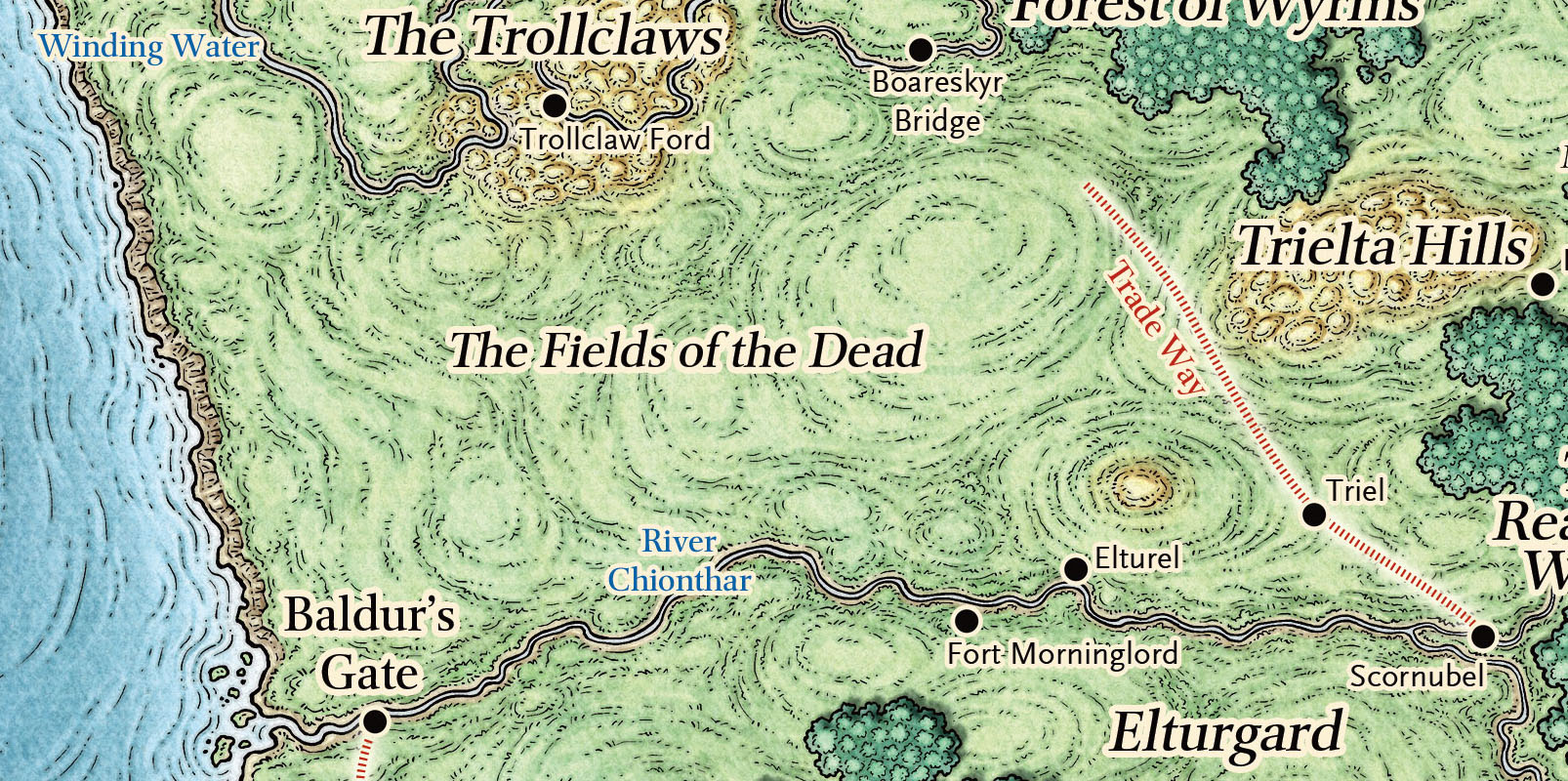


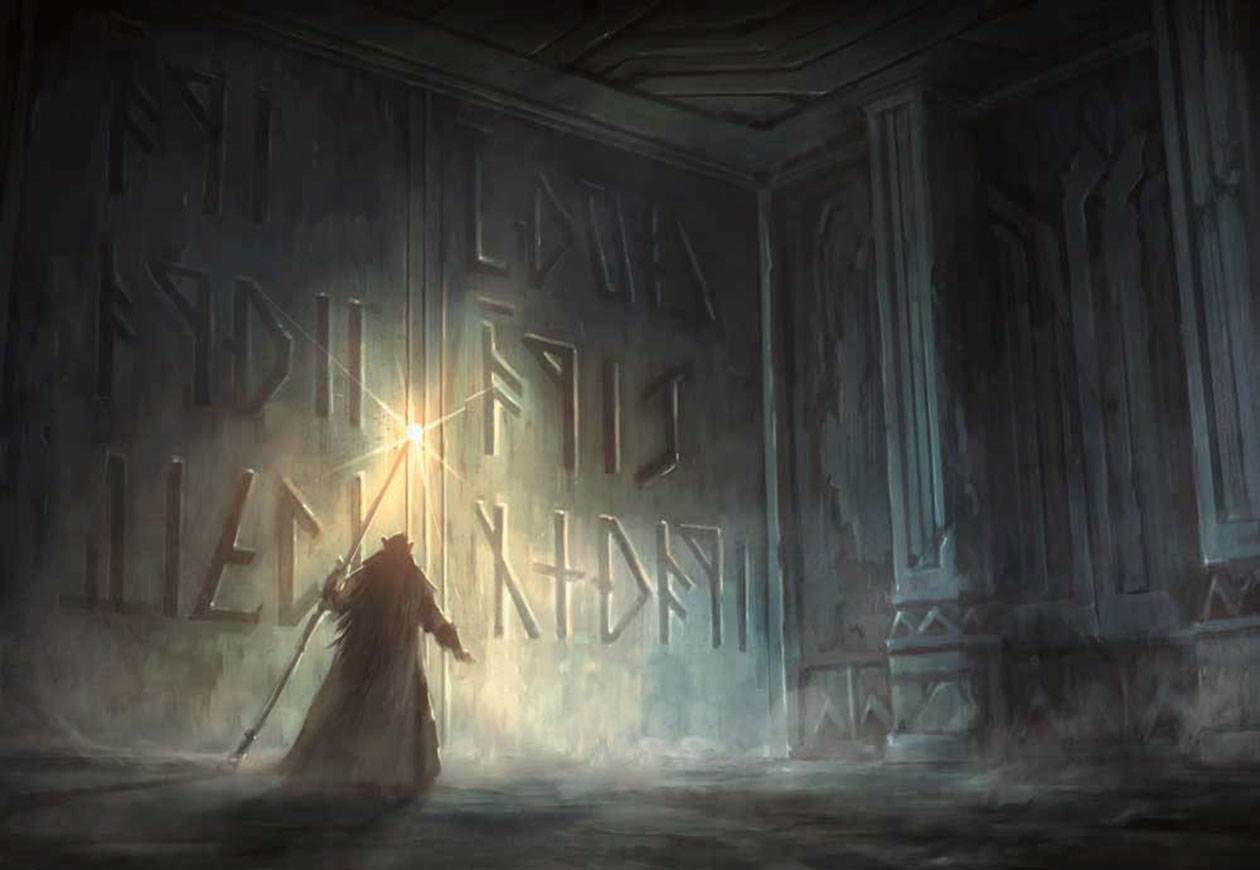
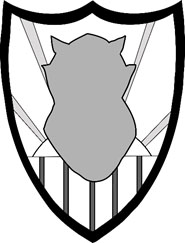
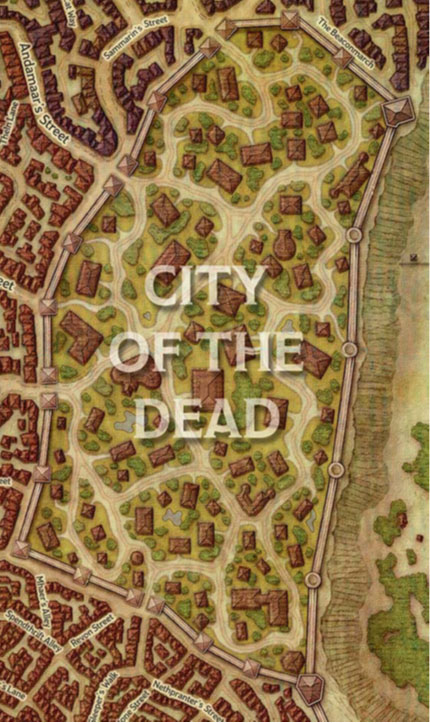 they wanted to follow up on: In their original attempts to figure out why the Zhentarim had been interested in Renaer’s mourning locket for his mother, they had visited the Brandath Crypts with him several weeks earlier. Now they suspected that they might have missed something. They knew that Lord Dagult had hidden his gold somewhere, they knew that he had done significant construction to build his wife’s crypt, and they knew that he had hidden one of the Golorr eyes in his son’s mourning locket. Why? What was the connection?
they wanted to follow up on: In their original attempts to figure out why the Zhentarim had been interested in Renaer’s mourning locket for his mother, they had visited the Brandath Crypts with him several weeks earlier. Now they suspected that they might have missed something. They knew that Lord Dagult had hidden his gold somewhere, they knew that he had done significant construction to build his wife’s crypt, and they knew that he had hidden one of the Golorr eyes in his son’s mourning locket. Why? What was the connection?